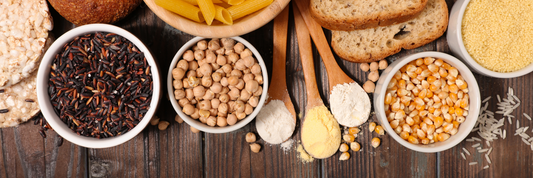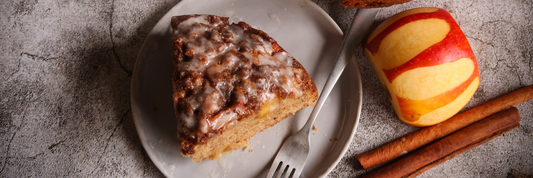Learning how to fill cupcakes is one of the easiest ways to take homemade baking to the next level. A hidden center of jam, ganache, or cream adds surprise, texture, and flavor to every bite. Whether you are using a simple knife, an apple corer, or a piping bag, filling cupcakes is simple once you know the right method. In this guide, you will learn how to fill cupcakes neatly and effectively, along with the best tools, fillings, and techniques for professional results at home.
Core Techniques to Hollow Out Cupcakes
Using an Apple Corer (or Apple Corer Alternative)
One of the easiest ways to prepare cupcakes for filling is with an apple corer. Once the cupcakes have completely cooled, gently press the corer into the center of the cupcake and twist slightly to remove a small cylinder of cake. The hole should be about halfway down, not all the way to the bottom. If you don’t have a corer, the wide end of a large piping tip or a small round cookie cutter can serve as an effective alternative.
Paring Knife Method (Cone Shape)
A paring knife gives you more control over the depth and shape of the hole. Insert the tip of the knife at a slight angle and cut a small cone out of the center of the cupcake. The cone can be trimmed down and placed back on top after adding the filling. This technique is especially useful for fillings with thicker textures like jam or custard.
Using a Piping Tip or Injector Tip to Puncture and Inject Filling
For smooth or liquid fillings such as caramel or pudding, you can use a piping bag fitted with an injector or round tip. Insert the tip directly into the center of the cupcake and squeeze gently to inject the filling. This method avoids cutting and keeps the cupcake surface intact, making it ideal for clean presentation and faster production.
Cutting the Cupcake in Half (Less Common, but Viable)
Although less common, some bakers cut the cupcake horizontally into two layers, spread the filling in the middle, and then replace the top. This approach works best for thicker fillings like frosting, whipped ganache, or mousse, but it requires steady hands to prevent the cupcake from breaking.
Choosing Whether to Replace Removed Cake Plug (or Discard/Scrap)
After filling, you can either replace the top portion of the cake or leave it open, depending on the type of filling and desired appearance. Replacing the plug helps seal in softer fillings and creates a smooth surface for frosting. The removed cake can also be saved for cake pops, trifles, or crumb decorations.
Methods to Add Filling Into Cupcakes
How to Fill Cupcakes with Sprinkles
Use a corer or knife to remove a small section of cake, then spoon in colorful sprinkles or confetti candies. Gently replace the top and frost over it. This method creates a “piñata cupcake” effect where sprinkles spill out when bitten into or cut open.

How to Fill Cupcakes with Buttercream
Fit a piping bag with a round or star tip and fill it with buttercream frosting. Insert the tip into the center of the cupcake and squeeze gently to fill. This technique is great for adding extra flavor or texture, especially when using flavored buttercream like chocolate, strawberry, or mocha.

How to Fill Cupcakes with Caramel
Use an injector or piping bag with a narrow tip to add soft caramel or salted caramel sauce into the center. Be careful not to overfill, as caramel can leak if it’s too warm. Chilling the caramel slightly before use helps it stay inside the cupcake.
How to Fill Cupcakes with Lemon Curd
Spoon or pipe lemon curd into a hollowed center using a small piping bag. Lemon curd provides a tangy balance to sweet cupcake bases such as vanilla or coconut. For a cleaner finish, replace the trimmed cake top before frosting.

How to Fill Cupcakes with Pudding
For soft and creamy fillings like vanilla or chocolate pudding, use a piping bag with a round tip. Pudding should be chilled but firm to avoid spilling. Insert the tip halfway down, squeeze gently, and stop when a small amount starts to rise back up.
Types of Fillings & Flavor Pairings
Jam, Fruit Coulis, Curds
Fruit-based fillings add natural sweetness and color. Strawberry jam, raspberry coulis, or lemon curd pair beautifully with vanilla or citrus cupcakes. These fillings work best when thickened slightly to avoid soaking into the cake.
Ganache, Chocolate, Fudge
Rich chocolate ganache or fudge filling creates a decadent texture contrast. Pair dark chocolate ganache with red velvet or mocha cupcakes, or milk chocolate fudge with peanut butter cupcakes. Let ganache cool slightly before using so it remains thick and glossy.
Buttercream, Flavored Frosting, Swiss/Italian Buttercream
Buttercream fillings make cupcakes extra creamy. Classic vanilla buttercream complements almost any base, while Swiss or Italian buttercream offers a lighter, silkier texture. Flavored versions such as espresso, strawberry, or caramel buttercream can add depth to the overall flavor.
Cream Cheese, Custard, Pastry Cream
Cream cheese filling adds tang and richness, perfect for carrot or red velvet cupcakes. Custard and pastry cream deliver a smooth, creamy center that works well in vanilla or fruit-flavored cupcakes. Chill these fillings before use to maintain shape.
Nut Butters, Praline, Nutella
Nut-based fillings like peanut butter, almond butter, or Nutella provide a dense and satisfying center. They work especially well with chocolate or banana cupcakes. For a lighter texture, mix nut butter with a bit of whipped cream or buttercream.
Alcohol-Infused Fillings, Liqueur Creams
Gourmet cupcakes often feature fillings flavored with liqueurs or spirits such as Baileys, rum, or coffee liqueur. These add warmth and aroma without overwhelming sweetness. They should be added sparingly to avoid overpowering the cupcake.
“Surprise Inside” Combinations (Candy, Caramel, Mousse)
“Surprise inside” cupcakes hide small candies, caramel, or mousse centers for visual and flavor appeal. Examples include cupcakes filled with mini chocolate chips, soft caramel bites, or chocolate mousse. These fillings make cupcakes more interactive and memorable for events.
Finishing Techniques After Filling
Replace Removable Cake Plug (If Used)
If you removed a section of cake while coring, gently replace the top portion after filling. Trim off the tip of the cone-shaped plug so it lies flat and doesn’t push the filling out. This helps seal the cupcake and keeps the frosting layer smooth.
Light Pressing to Secure Plug
Once you’ve replaced the cake plug, press it down lightly to secure it in place. Avoid pushing too hard, as that can squeeze out the filling or crack the cupcake. A gentle press ensures stability without affecting the structure.
Frost the Cupcake to Conceal Filling Hole
Apply your chosen frosting evenly over the surface to hide any seams or holes. Buttercream or whipped frostings work well for covering filled cupcakes, creating a neat and polished finish. The frosting also helps keep moisture inside and preserves freshness.
Optional Topping Decoration (Sprinkles, Drizzles)
Add final touches such as sprinkles, chocolate drizzle, crushed nuts, or fruit for extra appeal. Decorations not only enhance presentation but also hint at the cupcake’s flavor, making each one more enticing.
Let Cupcakes Rest Before Serving (to Allow Filling Stability)
After filling and frosting, let cupcakes rest for at least 20–30 minutes before serving. This allows the filling to settle and prevents it from shifting or leaking when cut or bitten into. For creamy or custard fillings, brief refrigeration helps them firm up.
Tips & Troubleshooting When Filling Cupcakes
Avoid Over-Filling (Prevents Leaks)
Too much filling can cause cupcakes to leak or collapse. Aim to fill the cavity about two-thirds full, leaving enough room for the plug or frosting layer on top.
Use Stable Fillings That Won’t Weep or Run
Avoid very runny fillings, which can soak into the cake or leak through the liner. Thicker curds, ganache, or whipped fillings hold up better, especially for display or transport.
Adjust Depth So Filling Stays in Center
Keep the cavity shallow enough so the filling remains centered and does not reach the bottom of the cupcake. This prevents sogginess and maintains even texture from top to base.
Keep Cupcakes Chilled Before and After Filling
Cool cupcakes completely before adding any filling. After filling and frosting, refrigerate briefly to help fillings like custard, cream, or caramel set and stay stable.
Trim Plug Neatly for Better Sealing
If you replace the cake plug, trim the bottom tip so it fits flush with the surface. A flat plug prevents bulging and helps the frosting spread evenly over the top.
Practice on Test Cupcakes First
Before filling an entire batch, practice on one or two cupcakes to check how the filling behaves. This helps you gauge portion size, texture, and temperature for best results.
Use Firmer Cake Bases for Filled Cupcakes
Choose a cake recipe with a slightly denser crumb so it can hold fillings without collapsing. Sponge, vanilla butter, or chocolate cakes tend to support fillings better than very light batters like angel food.






